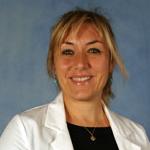Collaboration between physicians and nurses sets a positive tone for the patient's care experience that can help boost satisfaction scores. Here's how the medical director and nurse managers at Palomar Medical Center (PMC) Poway in San Diego County collaborated to improve the frequency and quality of RN-MD communication. The following is adapted from a poster presented at Vituity's annual Partnership meeting.
Introduction
The mission of Palomar Health is to heal, comfort, and promote health in the communities we serve. As physicians and nurses, we help to realize this mission through both our clinical expertise and our skill in communicating with patients and families.
As the medical director and nurse leaders for PMC Poway's medical, surgical, and telemetry units, we observed inconsistent communication between the rounding/consulting physicians and floor nurses. These inconsistencies sometimes resulted in confused patients who had to wait a long time for clear answers to their questions. The communication issues also prevented nurses from fully participating in the decision-making involving their patients.
We resolved to eliminate the inconsistencies by working together and creating a process to help hospitalist physicians improve and develop their clinical interactions with registered nurses (RNs). Our goal was for physicians to communicate the care plan to the nurse 100 percent of the time, either in person or by phone. Whenever possible, the physician and nurse would engage in team rounding (i.e., seeing the patient together to discuss the care plan).
Methods
To make rounding more effective and patient-centered, we utilized and expanded the Communications Bundle 101 model developed by the Veteran's Health Administration (VHA). Bundle 101 identifies four behaviors every physician should use when seeing patients in their hospital rooms:
- Knock before entry.
- Introduce yourself and acknowledge everyone in the room.
- Sit and face the patient.
- At some point during the visit, ask the open-ended question: "What are you most worried (or concerned) about?" And then listen.
We also developed and implemented several tools to foster improved communication. The first was a two-part questionnaire to be completed by nurses. The top section dealt with physician-nurse communication (e.g., did it occur? How?). In the bottom section, the nurse noted whether the physician engaged in the four Bundle 101 behaviors during team rounding.
To determine a baseline for nurse-physician communication, nurses completed two to four questionnaires per shift for two months. Results were tallied and shared with both teams. Through this process, we learned that physicians were contacting nurses in person or by phone to discuss the care plan 50–100 percent of the time (depending on the physician). However, team rounding occurred only 40–60 percent of the time.
Next, we (the medical director and nurse managers) provided both nurses and physicians with education on effective communication. We set a strong expectation that they communicate about every patient and engage in team rounding when possible. For physicians, we emphasized that taking a few extra minutes to locate the nurse before rounding would ultimately decrease their workload while improving patient care and satisfaction.
Another tool we implemented to facilitate team communication was the whiteboard. One board was placed in the physician work area. Every day, the hospital care assistant posted pictures of all nurses working that shift. Underneath each nurse’s picture was his or her phone number and a list of their patients’ room numbers.
Another white board was placed in each patient's room and included:
- Physician photos
- Names of all care team members
- A brief description of the care plan and daily routine
- Family contact info
The board served as a reminder for nurses and patients of which physician would be caring for them.
Finally, we enlisted a nurse champion to ensure that questionnaires were completed and white boards were correctly updated each day.
To assess the impact of these interventions on communication, the nurses completed questionnaires for an additional two months. Results were collected, tallied and relayed to the staff and physicians.
Results
Following implementation of the program, nurse-physician communication became far more consistent. Physicians contacted nurses to discuss the care plan almost 100 percent of the time. In addition, participation in team rounding increased dramatically. The project also had a noticeable impact on our patient satisfaction scores, which trended upward after implementation of the new process.
Both physicians and nurses gave very positive feedback about the project. For the most part, they embraced the new tools and processes and appreciated the resulting improvements in communication. Nurses in particular felt more satisfied with their roles. Their expertise was better utilized, and they were more involved in the decision-making about their patients' care. Physicians found the process actually reduced the amount of time they spent responding to questions and phone calls, which allowed them to work more efficiently.
Conclusions
Research suggests that communication between nurses and physicians is essential to the function of inpatient units2. A functional dyad between a rounding physician and RN significantly affects patients’ clinical outcomes and length of stay. Furthermore, satisfaction scores improve when there is appropriate communication between nurses and physicians. Such communication, preferably through rounding and when expressed effectively to team members and patients, decreases costs and the likelihood of medical errors and readmissions3.
Having been through the process, we now realize that team rounding is absolutely vital to improving both patient care and staff relationships. Going forward, we will continue to educate nurses and doctors on the importance of communication, monitor team rounding and provide positive reinforcement for those who practice exemplary behaviors.
We are excited that our project has helped to foster more collegial relationships between physicians and nurses as well as furthering the Palomar Health mission of providing exceptional patient care.
Updates
We are currently working with Palomar Health's Service Excellence Department to develop a streamlined, computerized version of the questionnaire that will provide ongoing reinforcement for nurse-physician communication. Our goal is to provide consistent monitoring and reinforcement until these positive behaviors are hard-wired into our departmental culture.
Bibliography
- Frequency of Nurse-Physician Collaborative Behaviors in an Acute Care Hospital. Journal of Interprofessional Care (2012). 26:2 pp. 115-120.
- "Strategies for collaborative nurse-physician relationships," accessed at www.strategiesfornursemanagers.com
- www.isixsigma.com
Originally published July 28, 2015. Updated September 25, 2018.

























